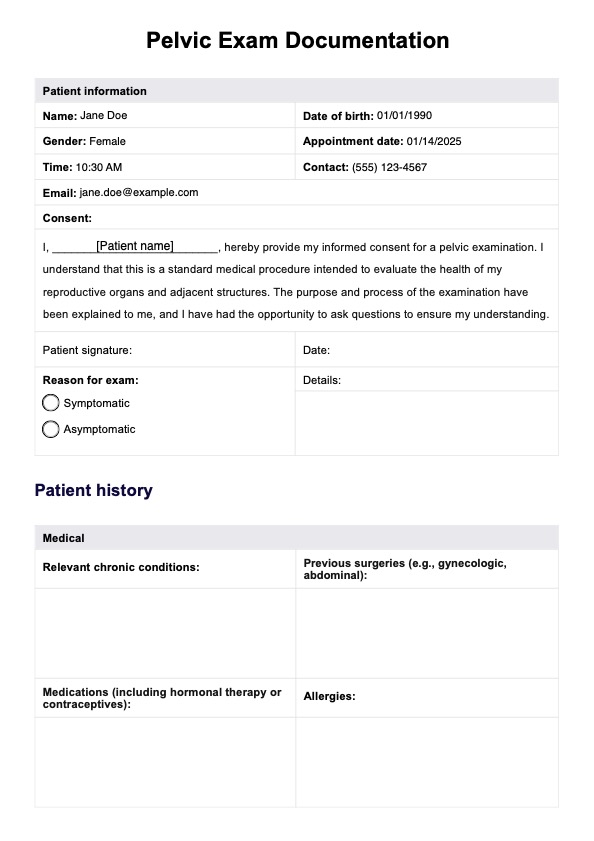A Pelvic Exam Documentation Template is a structured tool designed to guide healthcare professionals in recording the findings of a pelvic examination. It ensures all aspects of the assessment, from the evaluation of the external genitalia to laboratory examinations like Pap smears, are systematically documented.This document aligns with established clinical methods, promoting accuracy, thoroughness, and high-quality patient care.

Pelvic Exam Documentation Template
Get a free Pelvic Exam Documentation Template to streamline your clinical documentation. Plus, learn the importance of a pelvic exam in this guide.
Pelvic Exam Documentation Template Template
Commonly asked questions
A pelvic examination is performed to assess symptoms such as pelvic pain, abnormal discharge, or changes in the vaginal walls. It may also be part of routine preventive care, such as screening for cervical cancer or sexually transmitted infections, or to evaluate specific conditions like pelvic organ prolapse.
Cervical motion tenderness refers to pain elicited when the cervix is gently moved away from its normal position during a bimanual examination. It can indicate underlying issues such as pelvic inflammatory disease or other gynecologic conditions, making it a critical part of a complete exam for female patients.
EHR and practice management software
Get started for free
*No credit card required
Free
$0/usd
Unlimited clients
Telehealth
1GB of storage
Client portal text
Automated billing and online payments











